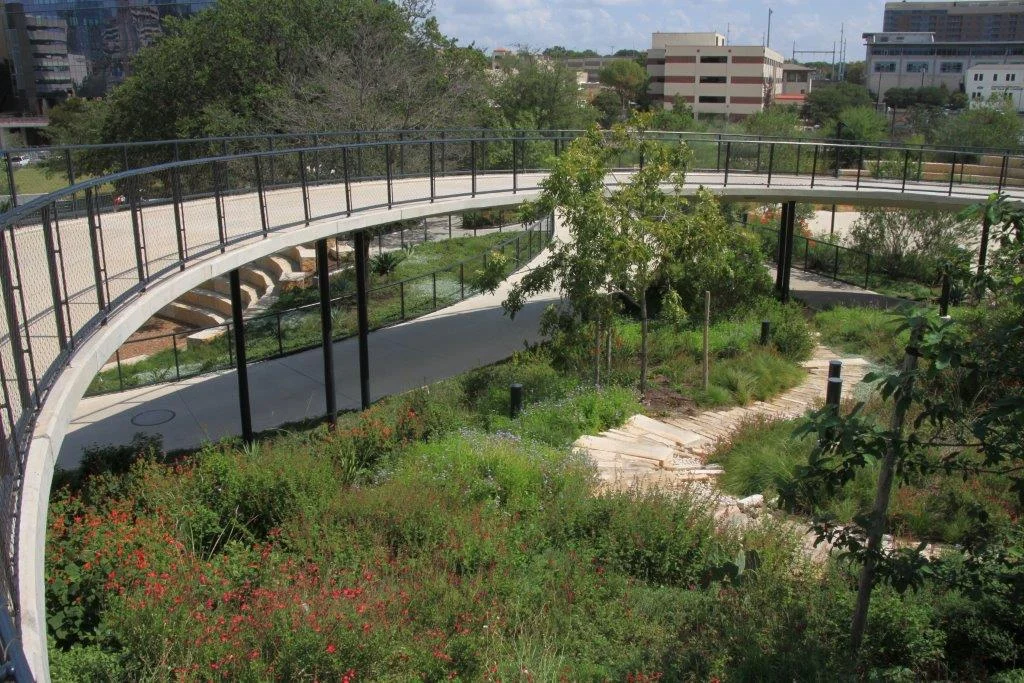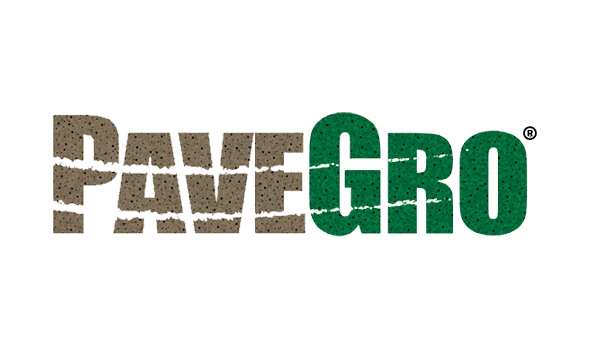Solving Issues of Urban Development: Waterloo Park
Solving Issues of Urban Development: Waterloo Park
After more than a decade of planning and four years of construction, Waterloo Park opened to the public on August 14, 2021. As the largest urban park in Austin, the 11-acre space is the first phase in a 1.5-mile chain of green spaces and public amenities tied to a major stormwater improvement plan between 15th Street and Lady Bird Lake.
Waterloo Park in Austin, Texas uses ESCS lightweight aggregates in stabilized horticultural subsoils to reduce structural load, improve drainage, and support long-term plant health across an 11‑acre urban park.
The Amphitheater Terrace
The Amphitheater Terrace offers shaded relief and panoramic views of the park. Beneath the planting soil, stabilized horticultural subsoil reduces weight and ensures proper drainage. The media’s available pore space supports oxygen exchange and microbial growth, which are essential for long-term plant vitality.
A Park Years in the Making
After more than a decade of planning and four years of construction, Waterloo Park opened on August 14, 2021. As Austin’s largest urban park, the 11‑acre site is the first phase in a 1.5‑mile stormwater improvement corridor extending from 15th Street to Lady Bird Lake. A few years on, the park continues to perform well and serve as a key public space for the city.
Located two blocks from the State Capitol, the park features hike and bike trails, an elevated skywalk, flexible lawn areas, a concert pavilion, quiet nooks, children’s play areas, and raised decks. The landscape includes more than 500 trees, 100,000 plants, and 50 feet of elevation change with wetlands and Central Texas–inspired plantings. A multidisciplinary team—architecture, civil and structural engineering, landscape architecture, hydrology, soil science, ecology, and horticulture—shaped the park.
Infrastructure and Design Behind the Scenes
A 10.5‑foot‑diameter underground stormwater channel addresses historic flooding. Rainwater is collected via catch basins and piping, stored in a cistern, and pumped to rain gardens for filtering. Engineered concrete structures support walkways, concessions, and restroom areas. Specially designed soils and irrigation systems provide optimal growing conditions for trees, plants, and turf zones.
Olsson Associates developed the soil specifications for distinct areas—performance lawn, street trees, wetlands, planting beds, general turf, and on‑structure zones. A key element was the use of stabilized horticultural subsoils: a blend of 2 parts sandy loam, 3 parts lightweight aggregate (expanded shale), and 1 part compost, placed beneath planting soils at varying depths depending on use.
Why Lightweight Aggregate Was Chosen
Arcosa lightweight aggregates are durable and porous—absorbing water and nutrients and releasing them back as soils dry. The angular particles interlock at approximately the 50% rate to form a stable matrix, while added pore space increases oxygen exchange and internal drainage.
At Waterloo Park, this approach lets the performance lawn drain within minutes after rainfall—critical for events—while providing firm support for seating. In street‑tree zones, it supports pavements without sacrificing root health. The improved aeration and moisture regime promote larger root systems and a healthier landscape overall.
A Lasting Urban Green Space
Today, Waterloo Park continues to demonstrate how high‑performance soils and lightweight aggregate can deliver resilient, event‑ready public landscapes within tight structural limits, all while offering everyday spaces for relaxation, recreation, and views of the Capitol dome.













